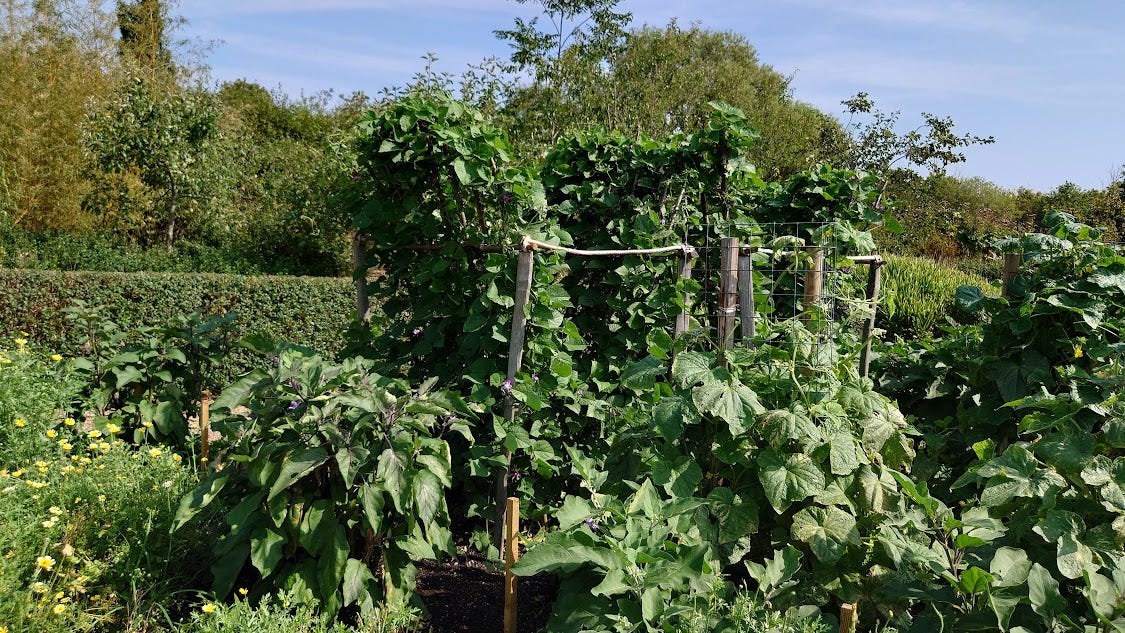Whenever I visit a garden, I’m immediately drawn to the kitchen garden, if there is one, in the hope of seeing something new or different. Over the last few weeks, I have visited four kitchen gardens, both in the UK and in the Loire, France and I have plenty to share with you. The four kitchen gardens are: The Global World Garden at RHS Hyde Hall and Yeo Valley Organic Garden in the UK, and Villandry and Le Jardins du Prieuré Notre-Dame d’Orsan in France. In this post I’m writing about The Global World Garden and Le Jardins du Prieuré Notre-Dame d’Orsan. The other two follow next week.
The Global World Garden at Hyde Hall
This super duper kitchen garden was designed by Xa Tollemache and constructed in 2017 to explore the world of vegetables around the world, displaying unusual and rare types of vegetables not normally seen in your average British allotment, and to reflect the increasing diverse UK society. …





